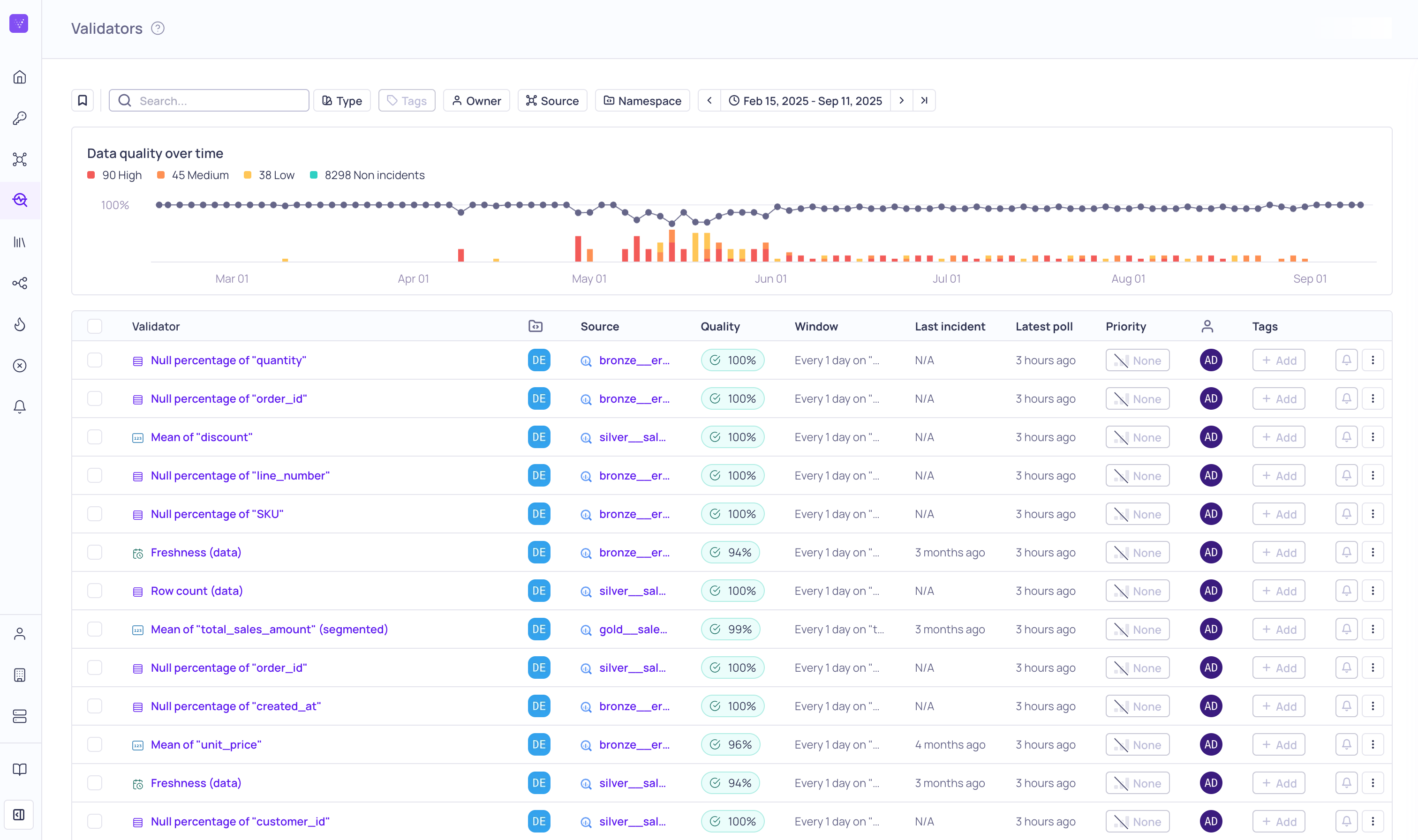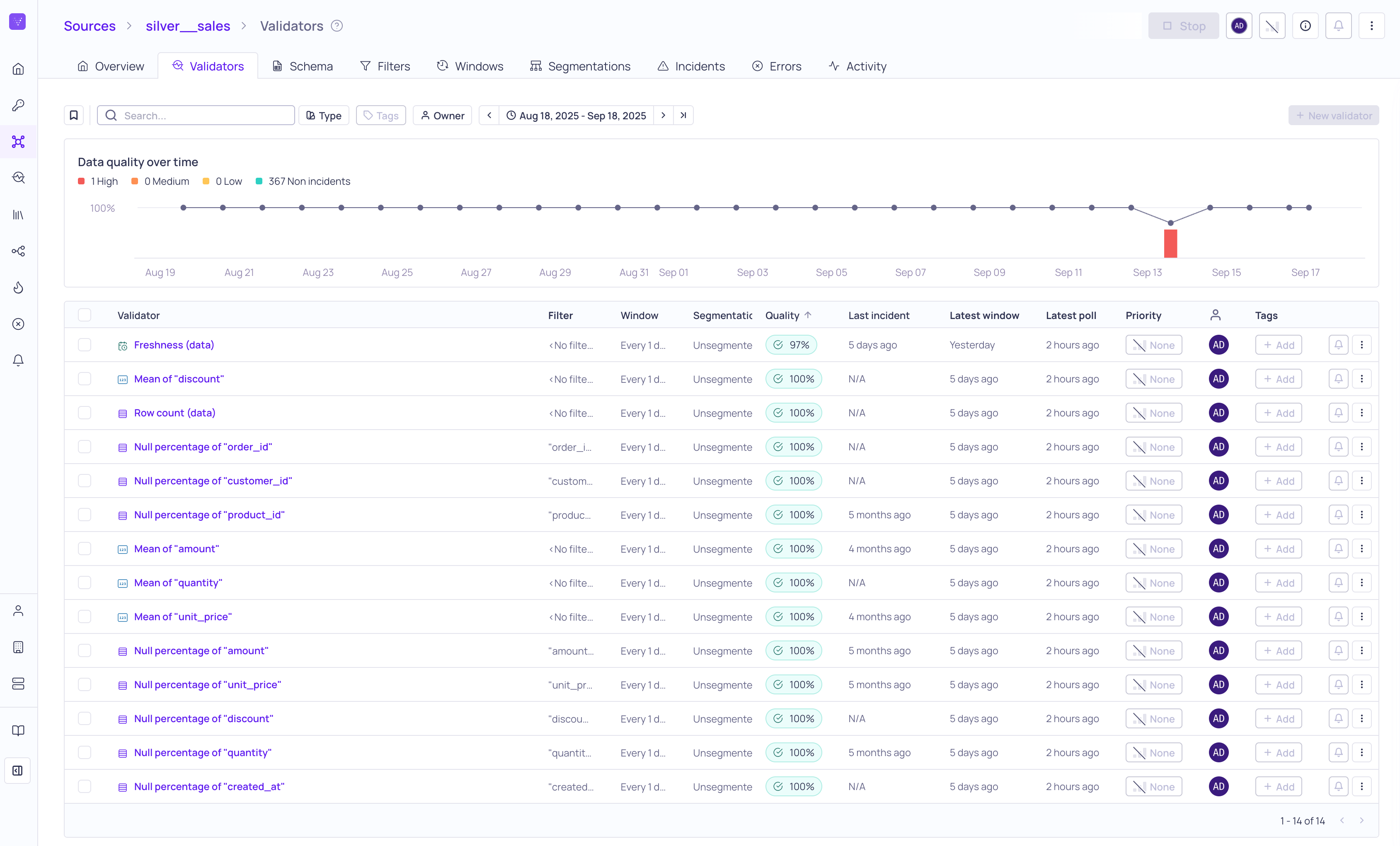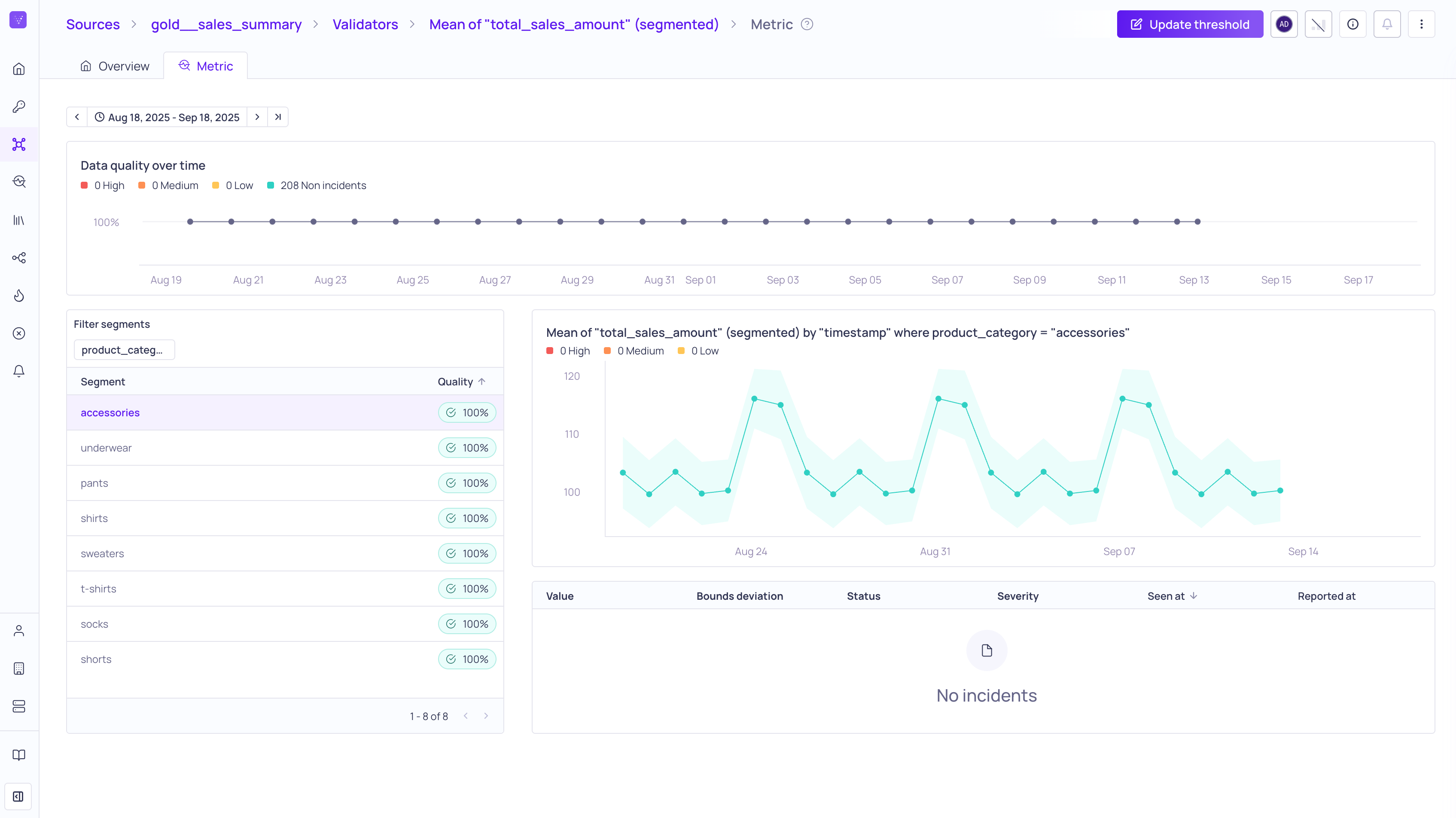Managing Validators
You can review and manage validators on the global Validators page, the Validators tab on the Source details page, or the individual Validator details page.
Global Validators Page

Global Validators page
To find the global validators page, click Validators in the platform navigation sidebar. The Validators page lists all of the validators that have been configured on sources that you have access to view (based on your namespace settings). This page includes the Data Quality over time graph and a list of all the validators with information about the source they are attached to, the data quality score, configured windows, assigned owners, and so on.
From this page, you can:
- Update an individual validator's configuration. Updating is limited to the display name, description, and filters.
- Mute or update the muting period to silence notifications on individual validators.
- If you want to see all the validators associated with a single source, click on the source name in the table to open its Validators tab. See Source Validators Tab.
- Click on a validator name to open its individual details page, where you can view more granular details and manage settings on the validator. See Validator Details Page.
Source Validators Tab

List of Validators for the silver__sales source
The Validators tab on a Source’s details page includes the Data quality over time graph and a list of all that validators that exist on that source. The validators table include the following information:
| Column Name | Description |
|---|---|
| Validator | The display name of the validator and an icon that indicates the type of validator. For more information, see Validator Types . This column will also display "Pending backfill" if the validator is waiting for backfill. |
| Filter | Filters that are configured on this validator. For more information, see About Filters . |
| Window | The window configured on the validator. For more information, see About Windows . |
| Segmentation | Which segmentation, if any, is applied to the validator. For more information, see Segmentation. |
| Quality | The quality score, which is calculated as a number of windows without incidents to the total number of windows. |
| Last incident | How long ago the last incident was discovered by the validator. For more information, see About Validator Incidents. |
| Latest window | How long ago data was last seen from the source. |
| Latest poll | How long ago data was last polled from the source. Displays an error if the last poll failed. |
| Priority | The importance (Critical, High, Medium, Low, None) of the validator. Incidents detected on this validator will inherit the priority. If there is no priority, incidents will inherit the source priority. |
| Owner | The user responsible for the source. |
| Tags | Tags assigned to the source. |
From this page you can:
- Use the histogram to view a summary of incidents from all validators configured on the source.
- Filter and sort the list of validators by searching for name, type, or status.
- Click + New validator to start the validator configuration wizard. For more information, see Configuring a Validator.
- Click the ⋮ menu to see options for duplicating, updating, or deleting the Validator.
- For more granular details and management of individual validators, click on a specific validator name to open its details page.
Validator Details Page

Validator details Metrics tab
A validator's details page displays information about the configuration of the validator and the incidents detected by the validator. There are two tabs under the validator details pages: Overview and Metric. By default, the validator details page opens on the Metric tab.
You can use the controls at the top of the page to:
- Update threshold settings on this validator. This option is not available on the Overview tab. See Updating Threshold Settings.
- Assign or update the owner of the validator. By default this owner will be set to the creator of the validator, and all incidents detected will inherit the same owner.
- Open the side panel to view a summary of details about the validator configuration.
- Mute or update the muting period of the validator to silence notifications for a specified time period.
- Click the ⋮ menu to see options for duplicating and updating the validator configuration or deleting the validator.
Overview Tab
The Overview tab displays the a description of the validator, Tags, and an Activity panel for all recent activities related to the validator and its metric calculations.
Metrics Tab
The Metrics tab displays information about the data quality and incidents that were detected by this validator. This page includes the Data Quality over time graph, the incident metrics graph, a list of detected incidents, and segment filters if you have segmentation configured on the validator.
Incident Metrics Graph
The metrics graph provides details about the values and bounds of the detected incidents, their severity, and when each was detected. In the metric graph:
- The granularity of the x-axis is determined by the window size.
- The graph updates in real-time, if new data comes in and a new window is completed. You do not need to refresh your browser window.
- Hover on a datapoint to display its detected time range, value, bounds, and severity.
ImportantFor all validators except Row Count (Volume) and Freshness validators, datapoints will not be created in the metric graphs when no data is observed.
Incidents List
The incidents list provides details about the values and bounds of the detected incidents, their severity, and when each was detected. You can use the incident list to:
- Update the status of the incident during investigation or triage.
- View the debug information to troubleshoot the incident. For more information, see Debugging an Incident.
- Click View Group Details to open a more detailed incident group view for troubleshooting and root cause analysis. For more information, see Managing Incident Groups.
Updated 3 months ago